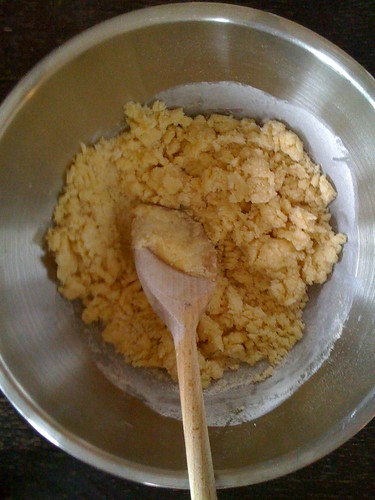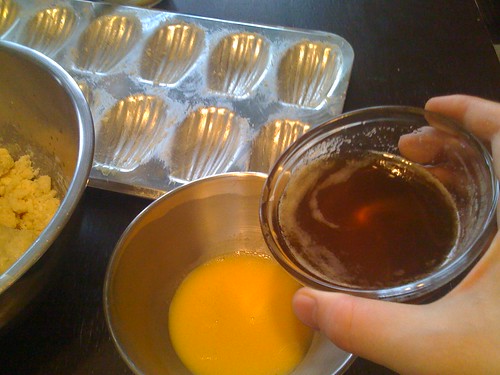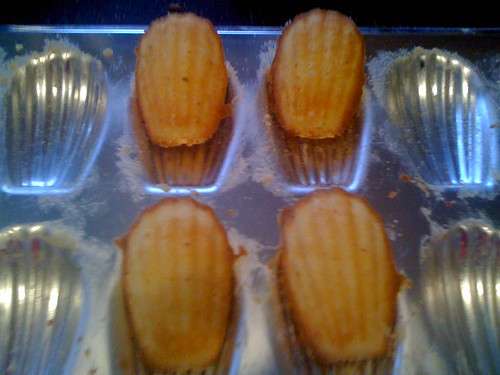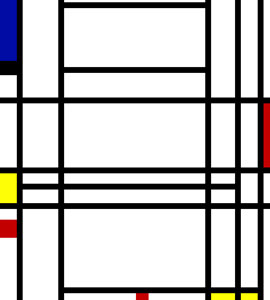As a fan of fine literature and food, I was curious when I first ran across Edmund Levin's article for Slate "The Way the Cookie Crumbles: How much did Proust know about Madeleines?"
"I raised to my lips a spoonful of the tea in which I had soaked a morsel of the cake. No sooner had the warm liquid mixed with the crumbs touched my palate than a shudder ran through me and I stopped, intent upon the extraordinary thing that was happening to me. An exquisite pleasure invaded my senses."
At least I thought they were!
For a moment after reading Levin's article, I questioned my childhood experiences. Were Proust and I both crazy? I knew I'd tasted those crumbs, but it had been a while. Surely this food writer must be right, and I wrong. There's no way he would have made this up...right?
To see if I could replicate some childhood memories and have a "Proust moment" of my own, I sat down with Julia Child's recipe from The Way to Cook and the madeleine pan I received for Mother's day. I figure that if anyone could settle this once and for all, it was Julia.
Here's Julia's recipe (more or less).
2 large eggs, lightly beaten
2/3 c. sugar
1 c. flour + 1 T for preparing pans
5 oz. butter
pinch of salt
zest of 1 lemon
juice of 1/2 lemon
1/2 t. vanilla
Now, while I fiddle with Julia's ingredients a bit (she calls for "drops of lemon juice and vanilla" - whatever that means), I stick to her preparation guide fairly religiously:
- Preheat the oven to 375 degrees Fahrenheit.
- Measure 1/4 c. eggs into bowl. Beat in sugar and flour. Blend and allow to rest for 10 minutes.

- Melt butter in saucepan. Bring to a boil and let brown slightly (it should be a lovely caramel colour). Place 1 1/2 T. in a bowl and set aside (very important!)
- Stir the rest of the butter over ice until cool but still liquid
- Blend the cooled butter with the reserved 1/4 c. of the eggs into the butter with the salt, lemon juice, rind and vanilla

- Mix remaining butter (1T) with the 1T of flour you have reserved, and use the mixture to prepare the madeleine pans.
- Divide batter into 24 lumps of 1 T each (okay, so I don't follow this part so religiously - measuring 1 T for each madeleine should do the trick)

- Bake 13-15 minutes or until browned around the edges and a teensy bit on top!

These delightful cookies are pure poetry, and will leave delightfully perfumed crumbs in the bottom of your teacup after dunking. Feel free to use your spoon to capture a few, a la Proust, when no-one's looking!
Now to the controversy. Levin extrapolates several things about Proust's madeleines from the text, all of which seem silly to me. Most importantly, he argues that Proust's madeleine would have needed to be very dry, in order produce such a quantity of crumbs. Now, this is plain nonsense. Has this guy ever dunked a donut?
I could go on... but for now, I think I'll just enjoy my madeleines.



